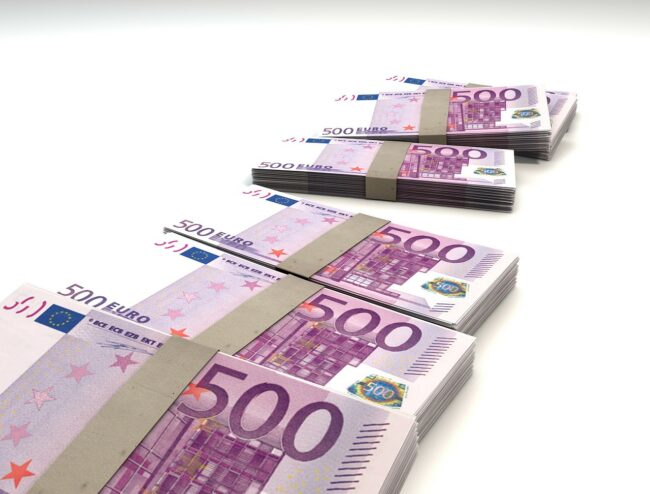Do you know that not all members of the European Union (EU) adopt the Euro as official currency or as their second currency? The EU is a political and economic union that has a total area of 4,233,255.3 km² and an estimated total population of about 447 million.
There were 28 EU member countries until January 31, 2020, when the United Kingdom (U.K.) pulled out of the union (Brexit), reducing the number to 27.
And out of the 27 member countries, only 19 of them adopt the Euro as the official currency. But we can’t blame the rest of the Union that are using another currency.
This is because the European Union was not only founded on November 1, 1993, to adopt a single currency.
Its origin was aimed at finding solutions to the conflict and frequent wars between neighbours in order to avoid what triggered the Second World War.
EU was also founded to create a common market so as to make member countries intertwine economically and politically.
It started with the coming together of just six countries which gave birth to the European Economic Community (EEC). The EEC metamorphosed into the European Union in 1992 and by November 1, 1993, a treaty was signed.
The Member countries are: Cyprus, Czech Republic, Austria, France, Germany, Italy, The Netherlands, Malta, Portugal, Latvia, Denmark, Lithuania, Spain, Sweden, Slovenia, Romania, Slovakia, Poland, Luxembourg, Estonia, Greece, Hungary, Ireland, Croatia, Finland, Belgium, and Bulgaria
Area of cooperation of the Union includes currency (Euro), trade, monetary system, economic growth, defence, and economic integration among others.
This article focuses on the currency aspect of the agreement of the union, but not all of them adopt the European currency known as Eurozone member.
Why are they called Eurozone members?
They are called the Eurozone or Euro-area member countries because of the adoption of the Euro as currency.
Below is a list of 19 EU member countries where the Euro is accepted as the official currency and when they joined the Union.
| Countries | Year of Adopting Euro | Date of Joining EU |
| Austria | January 1, 1999 | January 1, 1995 |
| Luxembourg | January 1, 1999 | January 1, 1958 |
| Spain | January 1, 1999 | January 1, 1986 |
| Cyprus | January 1, 2008 | May 1, 2004 |
| Portugal | January 1, 1999 | January 1, 1986 |
| Italy | January 1, 1999 | January 1, 1958 |
| Finland | January 1, 1999 | January 1, 1995 |
| Greece | January 1, 2001 | January 1, 1981 |
| Belgium | January 1, 1999 | January 1, 1958 |
| Ireland | January 1, 1999 | January 1, 1973 |
| France | January 1, 1999 | January 1, 1958 |
| Latvia | January 1, 2014 | May 1, 2004 |
| Germany | January 1, 1999 | January 1, 1958 (when it known as EEC) |
| Lithuania | January 1, 2015 | May 1, 2004 |
| Malta | January 1, 2008 | May 1, 2004 |
| Estonia | January 1, 2011 | May 1, 2004 |
| The Netherlands | January 1, 1999 | January 1, 1958 |
| Slovakia | January 1, 2009 | May 1, 2004 |
| Slovenia | January 1, 2007 | May 1, 2004 |
Note: There are five non-EU member countries that resolved to adopt the Euro as an official currency
What does the adoption of the Euro mean for the member countries?
They can use all the notes and coins in all EU countries that have adopted the euro. It is also important to note that many of the overseas territories of the member countries use Euro.
It also means citizens of member countries can load their debit or credit cards with Euro to cover day-to-day expenses during trips within the EU territory.
Euro to USD
€1=$1.10 as of Monday, March 28, 2022
€100=$109.81
EU member countries Yet To Adopt Euro
- Bulgaria
- Croatia
- Czechia
- Denmark (it opts out of the Euro)
- Hungary
- Poland
- Romania
- Sweden
The above countries are still planning. It is hoped that when they meet the necessary conditions, they would be in the Eurozone. It’s important to note that they belong to Europe (continent)
Sources:
- EU Info Centre. “What would you like to know?”. eeas.europa.eu. Retrieved March 28, 2022
- University of Essex. “Insight: Why Britain really voted to leave the European Union”. Essex.ac.uk. Retrieved March 28, 2022


